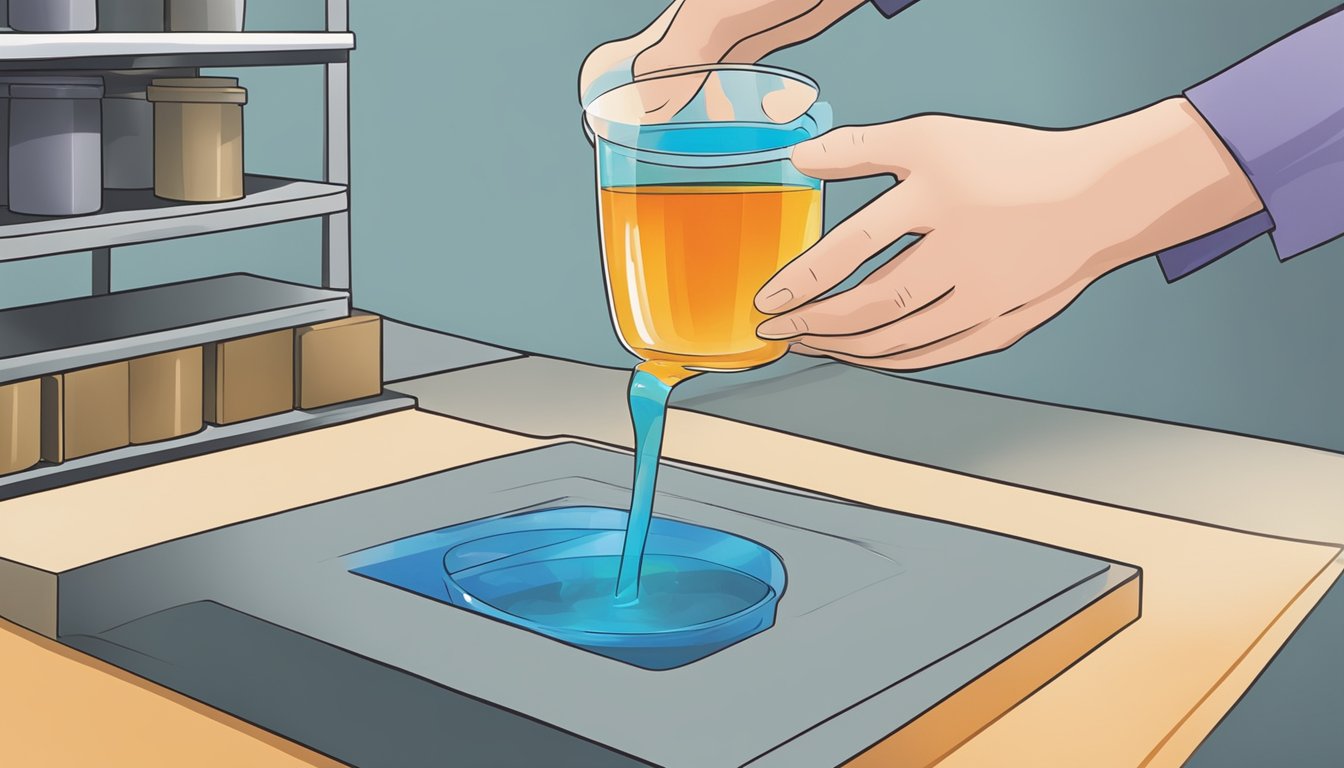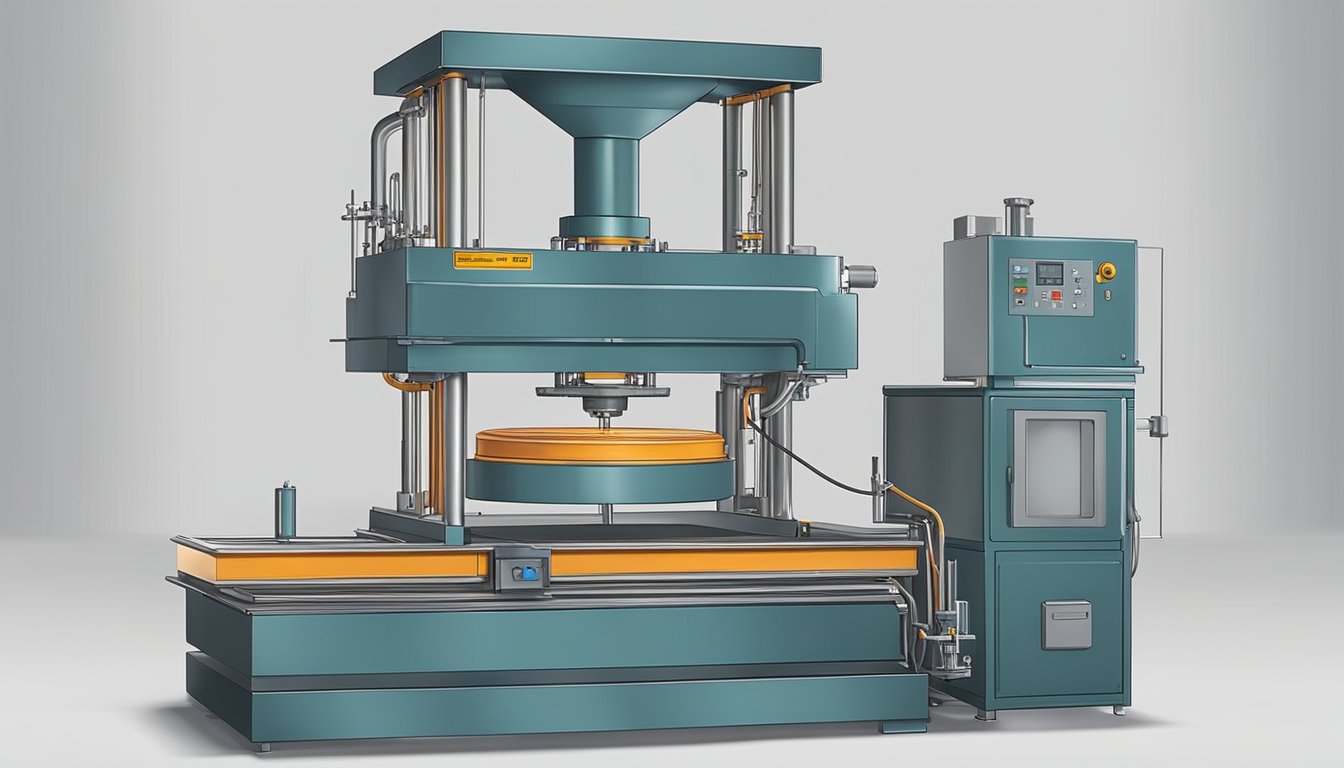Thermoset Phenolic Resin: Characteristics and Applications
19/01/2024
Thermoset phenolic resin is a type of polymer that is widely used in various industries due to its exceptional properties. It is obtained by curing a mixture of phenol-formaldehyde resins and a hardening agent. The curing process results in the formation of a three-dimensional network of cross-linked polymer chains, which gives the resin its unique properties.

Thermoset phenolic resin is known for its exceptional mechanical, thermal, and chemical properties. It is highly resistant to heat, flame, chemicals, and moisture, making it an ideal material for applications that require durability and reliability. The resin is also known for its excellent dimensional stability, low shrinkage, and high strength-to-weight ratio. Due to its unique properties, thermoset phenolic resin is used in a wide range of applications, including aerospace, automotive, electrical, and construction industries.
Key Takeaways
- Thermoset phenolic resin is a type of polymer that is obtained by curing a mixture of phenol-formaldehyde resins and a hardening agent.
- Thermoset phenolic resin is known for its exceptional mechanical, thermal, and chemical properties, making it an ideal material for applications that require durability and reliability.
- The resin is used in a wide range of applications, including aerospace, automotive, electrical, and construction industries.
Chemical Composition of Thermoset Phenolic Resin

Thermoset phenolic resin is a type of polymer that is known for its excellent thermal stability, chemical resistance, and mechanical properties. The chemical composition of thermoset phenolic resin is a complex mixture of phenol, formaldehyde, and a catalyst.
The basic structure of phenolic resin consists of a phenol molecule that is reacted with formaldehyde to produce a novolac resin. This novolac resin is then reacted with a crosslinking agent, such as hexamethylenetetramine (HMTA), to form a three-dimensional network of crosslinked polymers. The crosslinking process is initiated by the addition of an acid catalyst, such as hydrochloric acid.
The chemical structure of thermoset phenolic resin can be modified by varying the ratio of phenol to formaldehyde, the type of catalyst used, and the type of crosslinking agent used. The ratio of phenol to formaldehyde can affect the properties of the resin, such as its curing time, thermal stability, and mechanical properties. The type of catalyst used can also affect the properties of the resin, such as its curing temperature and rate.
In addition to the basic components of phenol and formaldehyde, other additives can be incorporated into the resin to modify its properties. These additives can include fillers, plasticizers, and flame retardants. Fillers can be used to increase the stiffness and strength of the resin, while plasticizers can be used to increase its flexibility. Flame retardants can be added to reduce the flammability of the resin.
Overall, the chemical composition of thermoset phenolic resin is a complex mixture of components that can be tailored to meet specific application requirements. The unique properties of this resin make it an ideal choice for a wide range of industrial applications, including adhesives, coatings, and composite materials.
Manufacturing Process

When it comes to thermoset phenolic resin, the manufacturing process is crucial in determining the properties and characteristics of the final product. The process involves three main stages: resin synthesis, curing process, and molding techniques.
Resin Synthesis
The first step in the manufacturing process is the synthesis of the resin. Phenol and formaldehyde are the two main components used in the synthesis of thermoset phenolic resin. The reaction between phenol and formaldehyde produces a novolac resin, which is then reacted with formaldehyde to produce a resole resin. The resole resin is then modified with a cross-linking agent to produce a thermoset phenolic resin.
Curing Process
The curing process is the second stage in the manufacturing process. Curing a thermosetting resin transforms it into a plastic or elastomer by crosslinking or chain extension through the formation of covalent bonds between individual chains of the polymer. The curing process involves heating the resin to a specific temperature and holding it at that temperature for a specific time. The curing process is critical in determining the final properties and characteristics of the thermoset phenolic resin.
Molding Techniques
The final stage in the manufacturing process is the molding technique used to produce the final product. There are several molding techniques used in the production of thermoset phenolic resin, including compression molding, transfer molding, and injection molding. Compression molding is the most common technique used in the production of thermoset phenolic resin products. It involves placing the resin into a mold and applying heat and pressure to cure the resin.
In conclusion, the manufacturing process of thermoset phenolic resin is a complex process that involves resin synthesis, curing process, and molding techniques. The process is critical in determining the final properties and characteristics of the thermoset phenolic resin. By understanding the manufacturing process, you can appreciate the complexity involved in producing high-quality thermoset phenolic resin products.
Properties of Thermoset Phenolic Resin

Thermoset phenolic resin is a versatile and durable polymer that is widely used in a variety of industrial applications. It is valued for its excellent thermal stability, mechanical strength, and chemical resistance. In this section, we will explore these properties in more detail.
Thermal Stability
Thermoset phenolic resin exhibits exceptional thermal stability, which makes it ideal for use in high-temperature applications. It has a high glass transition temperature (Tg) of around 150-200°C, which means that it retains its shape and mechanical properties even at elevated temperatures. Additionally, phenolic resin has a low coefficient of thermal expansion, which means that it does not expand or contract significantly with changes in temperature. This property makes it an excellent choice for applications where dimensional stability is critical.
Mechanical Strength
Phenolic resin is known for its exceptional mechanical strength, making it a popular choice for applications that require high-performance materials. It has a high compressive strength, which means that it can withstand heavy loads without deforming or breaking. Additionally, phenolic resin has excellent impact resistance, which means that it can absorb energy without fracturing. These properties make it an ideal choice for applications such as bearings, gears, and other mechanical components.
Chemical Resistance
Thermoset phenolic resin is highly resistant to a wide range of chemicals, making it an excellent choice for use in harsh environments. It is resistant to acids, bases, and solvents, as well as to oils and greases. Additionally, phenolic resin is highly resistant to water absorption, which means that it does not swell or degrade when exposed to moisture. These properties make it an ideal choice for applications such as chemical processing, oil and gas exploration, and marine environments.
In summary, thermoset phenolic resin is a highly versatile and durable polymer that exhibits exceptional thermal stability, mechanical strength, and chemical resistance. Its unique combination of properties makes it an ideal choice for a wide range of industrial applications.
Applications of Thermoset Phenolic Resin
Thermoset phenolic resin is a versatile material that finds application in a wide range of industries. Its unique properties, such as excellent thermal stability, high mechanical strength, and good chemical resistance, make it a popular choice for various applications. Here are some of the industries where thermoset phenolic resin is used:
Aerospace
Thermoset phenolic resin is widely used in the aerospace industry due to its exceptional fire resistance and low smoke emission properties. It is used in the production of aircraft interiors, such as cabin panels, overhead bins, and galleys. Phenolic resin is also used in the manufacture of aircraft brakes, where its high-temperature stability and wear resistance make it an ideal choice.
Automotive
In the automotive industry, thermoset phenolic resin is used in the production of brake pads and linings. Phenolic resin is an ideal material for brake components due to its excellent heat resistance, high friction coefficient, and good wear resistance. It is also used in the production of engine components, such as gaskets and seals, where its high-temperature stability and chemical resistance make it an ideal choice.
Electronics
Thermoset phenolic resin is widely used in the electronics industry due to its excellent electrical insulation properties. It is used in the production of printed circuit boards (PCBs), where its high-temperature stability and chemical resistance make it an ideal choice. Phenolic resin is also used in the production of electrical components, such as switches, connectors, and transformers.
In summary, thermoset phenolic resin is a versatile material that finds application in a wide range of industries. Its unique properties make it an ideal choice for applications where high-temperature stability, mechanical strength, and chemical resistance are required.
Environmental Impact and Sustainability
Thermoset phenolic resin is widely used in various industries due to its excellent mechanical and thermal properties. However, the production and disposal of thermoset phenolic resin can have a significant impact on the environment. In this section, we will discuss the environmental impact of thermoset phenolic resin and the efforts to make it more sustainable.
Biodegradability
Thermoset phenolic resin is not biodegradable, which means it cannot be broken down by natural processes. This can lead to the accumulation of waste in landfills and other disposal sites, which can have a negative impact on the environment. However, recent research has focused on developing biodegradable alternatives to traditional thermoset phenolic resins. These alternatives are made from natural materials and can be broken down by natural processes, reducing the amount of waste that is generated.
Recycling and Reuse
Another way to reduce the environmental impact of thermoset phenolic resin is through recycling and reuse. While traditional thermoset phenolic resins cannot be recycled, recent advances in technology have made it possible to recycle and reuse thermoset phenolic resins. This can significantly reduce the amount of waste that is generated and help to conserve natural resources.
In conclusion, while thermoset phenolic resins has many benefits, it also has a significant impact on the environment. However, through the development of biodegradable alternatives and the implementation of recycling and reuse programs, we can make thermoset phenolic resins more sustainable and reduce its impact on the environment.
Regulatory Standards and Compliance
When it comes to the production and use of thermoset phenolic resins, there are regulatory standards and compliance requirements that must be met to ensure safety and environmental responsibility.
In the United States, the Food and Drug Administration (FDA) has regulations in place for the use of phenolic resins in molded articles intended for repeated use in contact with food. These regulations specify the types and amounts of phenolic resins that are safe for use in food-contact surfaces. You can find more information about these regulations in CFR Title 21.
The Environmental Protection Agency (EPA) also has regulations for the production of phenolic resins. Facilities that manufacture synthetic resin obtained by the condensation polymerization of phenol and substituted phenols with aldehydes such as formaldehyde, acetaldehyde, and furfural must comply with National Emission Standards for Hazardous Air Pollutants (NESHAP). These standards limit the amount of hazardous air pollutants that can be emitted during the manufacturing process. More information about these standards can be found on the EPA website.
In addition to these regulations, there are industry standards and guidelines for the production and use of phenolic resins. The International Organization for Standardization (ISO) has published standards for the classification and testing of phenolic resins. These standards provide an overview of the different types of phenolic resin used in the manufacture of thermosetting plastics and a summary of available test methods. You can find more information about these standards in ISO 10082:1999.
Overall, compliance with regulatory standards is essential for the safe and responsible production and use of thermoset phenolic resins. By adhering to these standards, manufacturers can ensure the safety of their products and protect the environment.
Market Trends and Future Outlook
The global thermoset phenolic resins market is expected to grow at a CAGR of 4.6% from 2024 to 2032, driven by the increasing demand from end-use sectors such as refractories, friction, molding, abrasive, and rubber processing. According to Expert Market Research, the market is projected to reach USD 20.32 billion by 2032.
One of the major trends in the market is the increasing demand for phenolic resins in the electrical and insulation applications. Phenolic resins are widely used in the manufacturing of laminates, coatings, and adhesives, which are used in electrical equipment such as transformers, switchgears, and motors. The increasing demand for electricity and the growing need for energy-efficient electrical equipment are expected to drive the demand for phenolic resins in the electrical and insulation applications.
Another trend in the market is the increasing use of bio-based phenolic resins. With the growing concerns over the environmental impact of synthetic phenolic resins, manufacturers are increasingly focusing on the development of bio-based phenolic resins. Bio-based phenolic resins are made from renewable resources, such as lignin, which is a byproduct of the pulp and paper industry. Bio-based phenolic resins offer several advantages over synthetic phenolic resins, such as lower environmental impact, lower cost, and better performance.
In terms of regional outlook, the Asia-Pacific region is expected to dominate the market during the forecast period. The increasing demand for phenolic resins from the construction, automotive, and electrical industries in countries such as China, India, and Japan is expected to drive the growth of the market in the region. The increasing investments in research and development activities by the key players in the market are also expected to drive the growth of the market in the region.
Overall, the future outlook for the thermoset phenolics resin market looks positive, with the increasing demand from end-use sectors and the growing focus on the development of bio-based phenolic resins expected to drive the growth of the market in the coming years.




